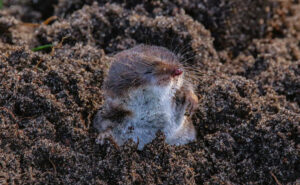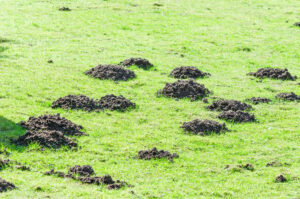
Moles are a common problem in gardens and lawns. These small, burrowing mammals can cause significant damage to plants and grass, as well as create unsightly mounds of dirt.
Fortunately, there are several methods available to control and eliminate moles from your garden. In this guide, we will explore some of the most effective strategies for mole removal.
Identifying Moles in Your Garden
Before you can begin to control moles in your garden, it is important to identify their presence. Moles are small, furry mammals that burrow through the soil, leaving behind raised tunnels and mounds of dirt.
They have pointed snouts, small eyes, and large, spade-like front paws that they use to dig. Moles are active year-round and can be detected by their distinctive tunnels and mounds.
Effective Strategies for Mole Removal
There are several strategies that can be used to eliminate moles from your garden. Some of the most effective methods include:
1. Trapping: One of the most effective ways to remove moles from your garden is to trap them. There are several types of traps available, including live traps and lethal traps. Live traps allow you to capture the mole without harming it, while lethal traps are designed to kill the mole. When using traps, it is important to place them in areas where moles are active, such as near mounds or tunnels.
2. Repellents: There are several types of mole repellents available, including castor oil, garlic, and predator urine. These products work by creating an unpleasant scent or taste that moles find unappealing. While some gardeners swear by these methods, others find them to be ineffective.
3. Vibrating or Sonic Devices: Another method for mole removal involves the use of vibrating or sonic devices. These devices emit high-frequency vibrations or sounds that moles find unpleasant, causing them to leave the area. While these devices can be effective, they may also disturb other wildlife in the area.
4. Natural Predators: Encouraging natural predators, such as owls, hawks, and snakes, to visit your garden can also be an effective strategy for mole removal. These predators will hunt and eat moles, reducing their population in your garden. However, it is important to be cautious when using this method, as some predators may also harm other wildlife or pets.
Preventing Future Mole Infestations
Once you have successfully removed moles from your garden, it is important to take steps to prevent future infestations. Some effective prevention methods include:
1. Removing Food Sources: Moles feed primarily on insects, grubs, and other small invertebrates. By removing these food sources from your garden, you can make it less attractive to moles. Consider using insecticides or other pest control methods to reduce the number of insects in your garden.
2. Removing Shelter: Moles prefer to burrow in areas with dense vegetation or other cover. By removing these areas, such as thick shrubs or piles of leaves, you can make your garden less appealing to moles.
3. Soil Modification: Moles prefer loose, moist soil that is easy to dig through. By modifying your soil, such as by adding sand or gravel, you can make it less hospitable to moles.
4. Fencing: Installing a fence around your garden can also be an effective way to prevent moles from entering. However, it is important to choose a fence that is deep enough to prevent moles from burrowing underneath.
Conclusion
Moles can be a frustrating and destructive pest in your garden, but there are many effective methods available to control and eliminate them. By identifying their presence, using traps or repellents, and preventing future infestations, you can successfully remove moles from your garden and protect your plants and grass from damage.
If you’re struggling with moles in your garden or lawn, Trap Your Moles has what you’re looking for. We offer the best mole-trapping pros in Dayton that will help you eliminate unsightly mounds and damaged plants and enjoy a beautiful, pest-free garden once again. Get in touch with us today to learn how.







No comment yet, add your voice below!